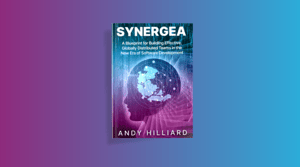Accelerance Blog
Blog
January 16, 2025 | Accelerance Research Team
Tech Talent Shortage Part 2: Five Cutting-Edge Technologies to Adopt
Best Practices
January 7, 2025 | Accelerance Research Team
Tech Talent Series Part 1: How the Tech Talent Shortage Could Derail Your Plans for Emerging Tech
Blog
October 16, 2024 | Rich Wanden
Software Outsourcing in EMEA looks to Regain Ground
Blog
October 9, 2024 | Andy Hilliard
Learn the history of outsourcing from Accelerance
Blog
September 27, 2024 | Andy Hilliard
The Benefits of Nearshore Software Development
Blog
September 12, 2024 | Andy Hilliard
We Are Here to Help: Machine Learning and Public Agencies
Blog
September 10, 2024 | Peter Griffin
Q&A: What Does it Cost to Work with Accelerance?
Blog
September 5, 2024 | Olivier Poulard
Ensuring Quality Assurance in Software Outsourcing Development
Blog
September 3, 2024 | Rich Wanden
Important Things to Know About Service Level Agreements for Software
Blog
September 2, 2024 | Andy Hilliard
Increase Profit Margin with Software Development Companies
Blog
August 30, 2024 | Andy Hilliard
Your Guide to the Software Outsourcing Vendor Visit Checklist
Blog
August 29, 2024 | Tom Cooper
Bridging Cultural Gaps: Achieving Effective Collaboration in Software Outsourcing
Subscribe to email updates
Stay up-to-date on what's happening at this blog and get additional content about the benefits of subscribing.

.png?width=300&name=WEBSITE%20Stop%20Chasing%20Low%20Hourly%20Rates%20Unlock%20the%20True%20Value%20of%20Offshore%20Development%20(450%20x%20253%20px).png)




